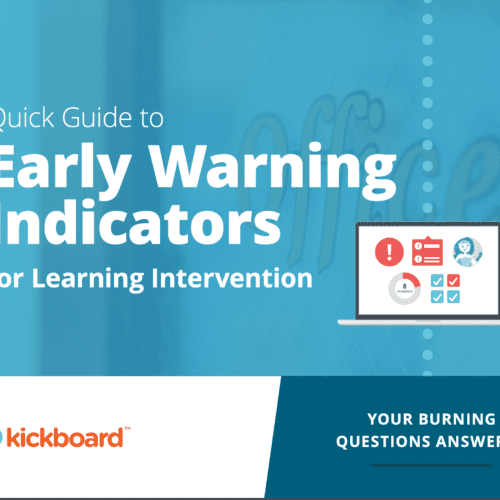
If you’re involved in content marketing, chances are good that content creation is one of your biggest challenges. It’s not just about trying to find enough ideas to sustain an acceptable level of output. You also need tactics and techniques that will help you writer faster and produce more in order to speed your way to your “mo’ content, mo’ money” goal. That’s why I researched what several different content creators had to say about becoming prolific and distilled their advice and insights into the following tactics.
Tactic #1: Establish a “Pre-Game” Ritual
Writers often create rituals to help their “heads in the game.” Your ritual doesn’t have to be lengthy or involved. In fact, getting a hot morning beverage can be turned into a ritual. The only real requirements is that you do it regularly and it’s effectively putting you in a productive groove.
Tactic #2: Make Writing a Daily Habit and Report to Someone
Practically every expert that I researched advocates writing every day or at least every weekday. That’s not obviously a problem for most communication professionals, especially content writers, but I think that tackling specific projects every day may be useful in whittling down a to-do list consisting of blogging, large, time-consuming special projects or any important project (e.g., a piece promoting your own business) that often gets nudged out of the way by more urgent ones (e.g., client rush jobs).
According to the experts, putting in even 15 minutes a day on that important writing project will begin to add up over time, especially if you’re able to really focus. What intrigued me especially was the suggestion of reporting your daily output to someone. I can see who such accountability could keep you on track instead of rationalizing neglecting the project for just one day … and then another … and another. If you can’t think of anyone who could be your accountability partner, I think that even announcing your project’s daily word count on Twitter at the end of the day will be enough to keep you on the straight and narrow.
Tactic #3: Set a Quota
Your accountability report might be even more effective if you can state whether or not you hit a pre-established goal. Your quota may be a word count or the number of minutes you spend in a writing session.
Tactic #4: Focus Intensely for Set Time Periods
Our productivity is often reduced because we allow ourselves to be distracted by email, social media, phone calls, the dog asking for a walk, whatever. So experts on writing productivity advocate closing the door, turning off all distractions for a specific interval of time and concentrating only on the writing task before us. The 50 Minute Focus is the most commonly talked about technique, but in truth, you could apply the technique to other time intervals, including the 15 minutes already mentioned. You can produce an amazing amount in a small amount of time if you’re firing on all cylinders.
Tactic #5: Identify/Establish Quiet Time for Writing
You won’t be able to use the 50 Minute Focus technique if people keep interrupting your writing session. So, you need to identify times when things are pretty quiet (either if it’s those small 15-minute intervals). Or you may have to carve some “Do Not Disturb” time out for yourself. Some people wake up earlier in order to get that peace and quiet and some set boundaries around certain times in their work day. The latter tactic may make some people grumble at first, but if you are consistent, the vast majority of people will come to respect your “Do Not Disturb” time.
Tactic #6: Leave off at a Point Where It Will Be Easy to Start Again
One technique that content creators can borrow from fiction writers is finishing a session by leaving your last sentence incomplete. That way, when it’s time to get back to work on that project, you can jump right into your last thought, which will help get you in gear for the rest of the session. It’s always easier to continue than to begin.
Tactic #7: Have Multiple Active Projects
While you’re at it, have a selection of projects at your fingertips. I’m not talking about multitasking, which we all know is a bad idea. I mean that you should arrange your project schedule so that you always have the option of switching to another task if you’re feeling stuck with your current one. That approach keeps you from becoming overly frustrated or bored, two emotions that can keep your mind a blank for much longer than necessary. Plus, working on something else is often just the thing you need to get your mental gears working on the original project.
If you’re a professional communicator, having to work on more than one project during the day may be more the rule than the exception. But if you haven’t tried switching things up when you’re blocked (and you don’t have a looming deadline), try this tactic and see if it gets you going.
Tactic #8: Carry a Notebook
Your brain works on your writing even when you’re not actually writing. If you’re like me, really useful phrases, sentences, and ideas pop into your head while you’re brushing your teeth, running errands, etc. The problem is, those flashes of inspiration can fade if you don’t capture them quickly. That’s why it’s a great idea to carry a notebook around so that you can jot down whatever comes to mind right at that moment or very shortly afterward. There are even notepads you can use the shower now! Here’s one productivity strategist’s suggestions on how to optimize notebook use.
Tactic #9 Use Music to Get into the Zone
Listening to music can help you shut out distracting thoughts and help you focus on the task at hand. Some say that using headphones helps them to really focus, and I heartily agree. When I’m listening music pumping through the headphones, the world fully fades away (that includes the music), and there’s only the words and me. I prefer music by specific singers, but some writers say they are better off avoiding lyrics in order to really focus, so they gravitate toward instrumentals instead.
Tactic #10: Plan Ahead
Knowing beforehand what you will be working on helps you gear up mentally and so speeds up your writing. Use editorial calendars to plan your content marketing so that you won’t have to waste valuable writing time trying to figure out what you should be writing about.
Tactic #11: Create Weekly and Daily Writing Plans
Now that you know what you’ll be writing about for the next few months or even the year, look at what you need to get done for the week and break down those tasks into to-do list into tasks for specific days. In his book, Write More, Sell More, author and copywriter Robert W. Bly recommends creating an hour-by-hour schedule. He states, “People who have a such a schedule know what they should be doing every hour, and therefore do it. People who don’t set a schedule tend to drift through the day, stopping and then starting tasks, jumping from job to job without getting much done.”
Tactic#12: Try Speaking Instead of Writing
Most of these tactics are for producing written content, but maybe you don’t like writing. But maybe you can speak eloquently for hours about your business or industry. If that’s the case, consider alternatives like podcasting or maintaining a YouTube or Blab show, for example, which will play to your strengths.
Conclusion
It’s a good idea to try out one new tactic at a time so you can judge how well it works for you and focus on turning it into a habit. Experts say that three to four weeks is the time period needed to turn a new approach into something that you do automatically. But hey, if you think you can handle multiple new tactics at one time, go for it! What matters is whether you see a measurable increase in your content output.







